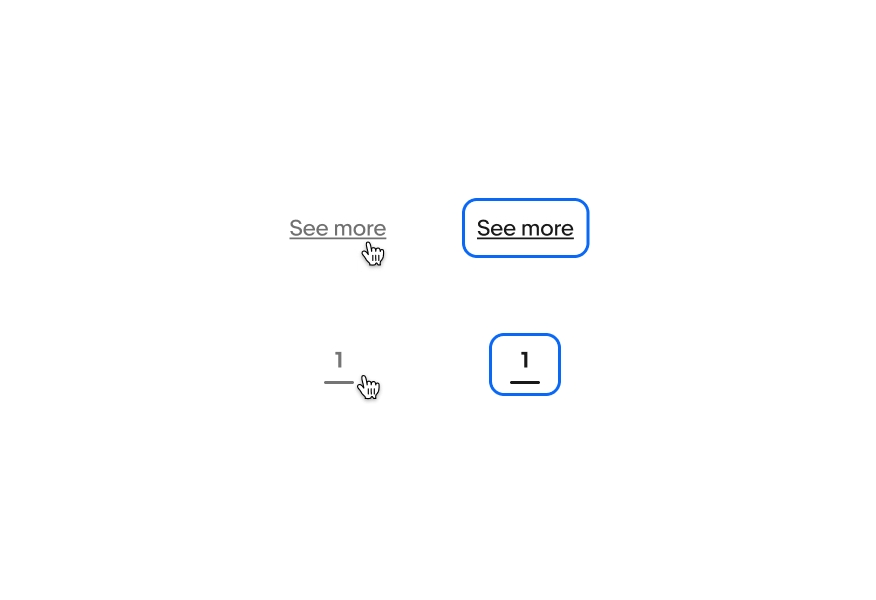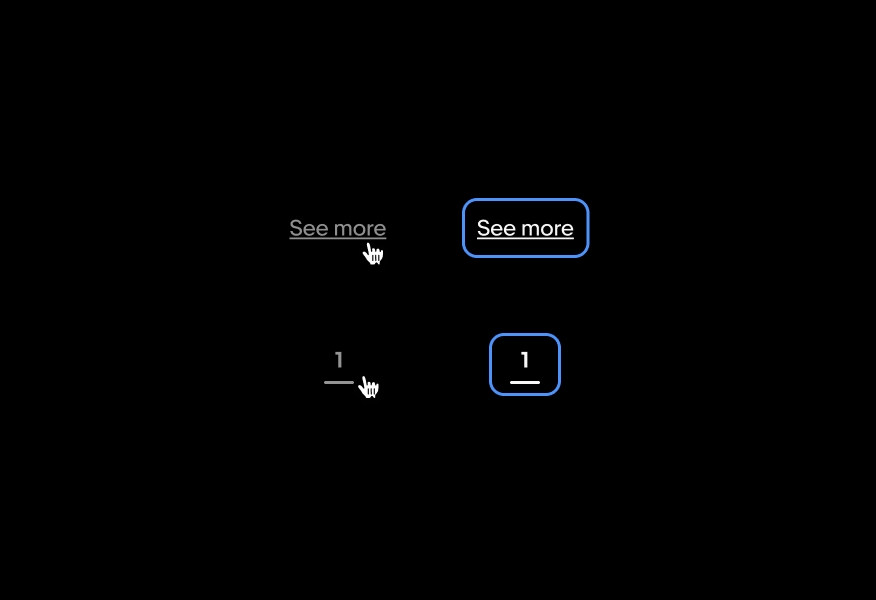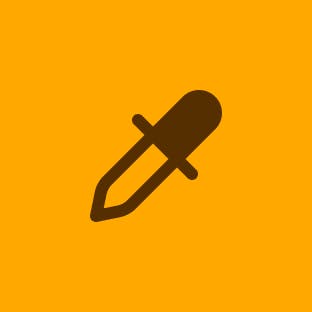Interaction states
States communicate the status of a component in response to user interaction.
Video description: A 5-second video shows three tiles of shoe images on a blue background. The computer cursor begins hover on the left image and moves to the right image where the tile is selected and a black outline appears around it. The cursor deselects the image and the outline disappears. The cursor hovers back to the image on the left.
Subtle
State changes are lightweight and distinct.
Additives
If multiple states occur simultaneously, like selected and hover, each will be clear and obvious.
Consistent
State changes are similar across components throughout the system.
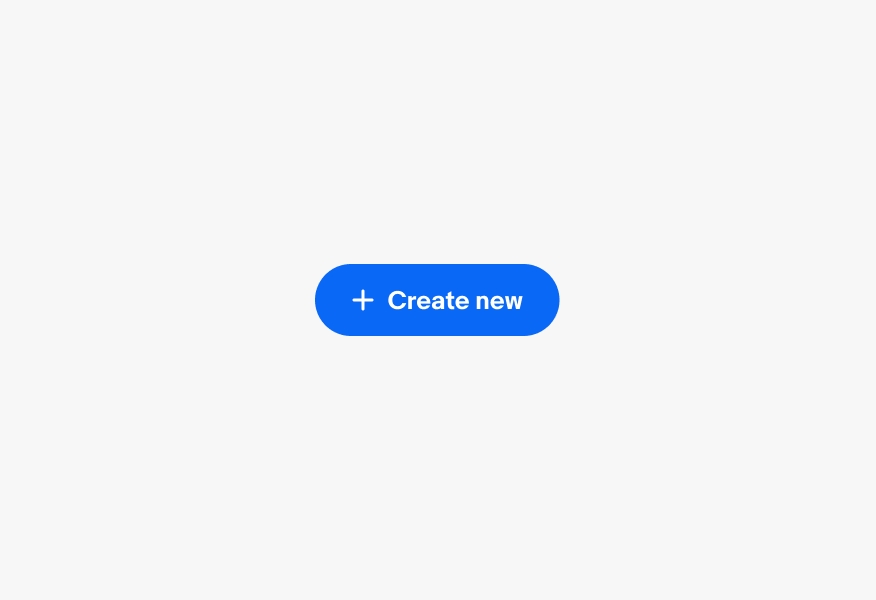
Enabled
The enabled state indicates an interactive component.
Video description: A 2-second video shows a gray disabled button that reads “+ Create new”. When the cursor hovers over it an icon with a circle with a line diagonally through it appears indicating the button is not able to be interacted with.
Disabled
The disabled state indicates a component isn’t interactive. The component may become interactive when prerequisites are met.
Video description: A 2-second video shows three cta buttons. The primary cta in blue reads “Buy It Now” while the secondary buttons are in white and read “Make an offer” and “Add to cart” with a blue outline and text. The pointing hand cursor moves over each button and a hover state layer appears on each button upon hover.
Hover
The hover state indicates that a cursor is actively hovering over a component. Hover states can be combined with focused, activated, selected, or pressed states.
Video description: A 3-second video shows a tab icon animates in a tapping motion in the bottom left corner as the focus blue outline state moves between a form field, cta button, and check box in the center.
Focus
The focus state indicates that a keyboard has tabbed to a component.
Selected
The selected state indicates a static choice.
Video description: A 2-second video shows one blue cta button that reads “Buy It Now”. The cursor hovers over it and presses it. When selected the button scales down a bit to indicate the motion of pressing it.
Press
The press state state indicates a tap or click is occurring.
Video description: A 5-second video shows four images of a designer bag stacked in a grid. A cursor hovers over the bottom left tile and drags it up to the top left. The cursor forms a closed hand on drag and the top left image moves to the bottom and snaps into place. The closed hand then takes the top left image and drags it to the bottom left and snaps into place returning it to how it began.
Drag
The drag state occurs if an element is actively being held.
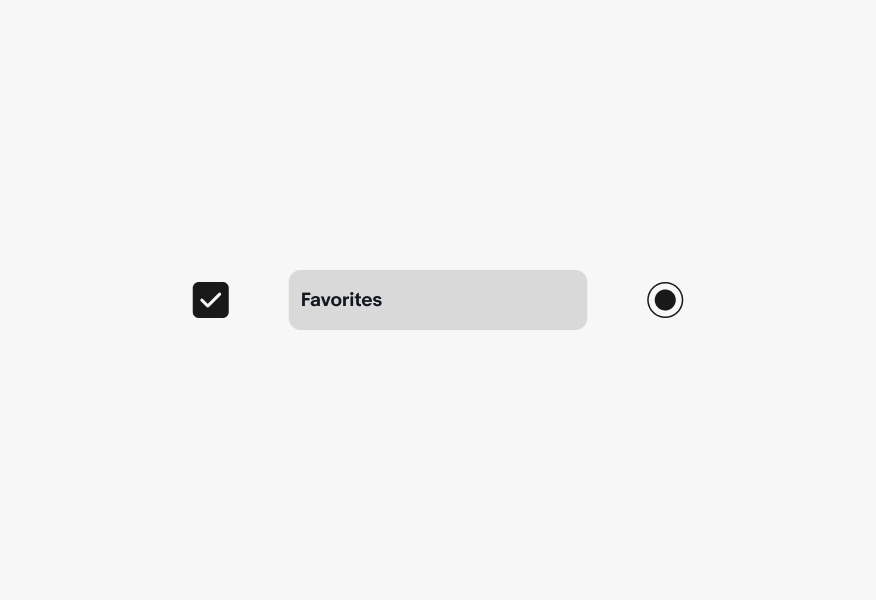
Active
The active state indicates a current destination or selection.
- Label
- State layer
- Content
Color fill
For elements with a container, a state-layer is added above the content. Each state increases the opacity by 4%. Dark mode uses white (#FFF) for the interaction layer instead of black.
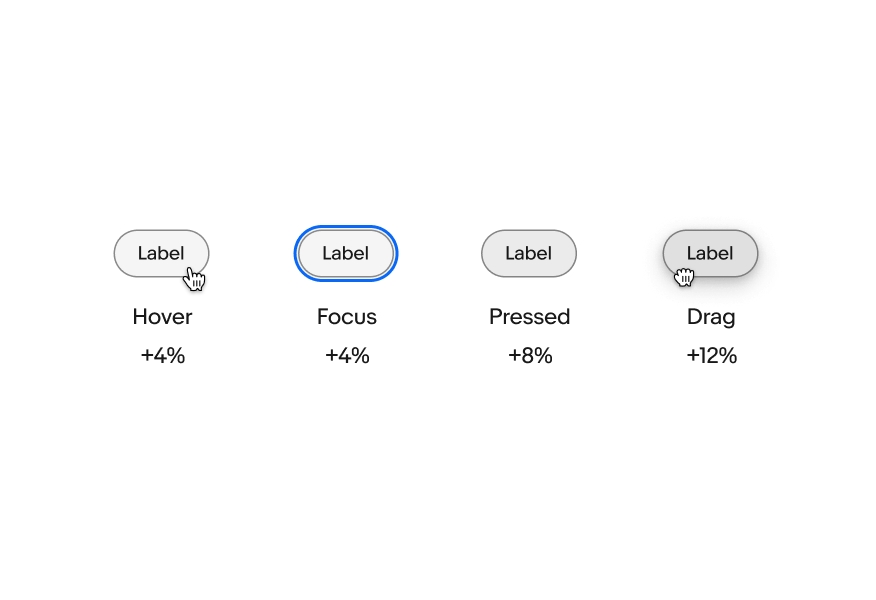
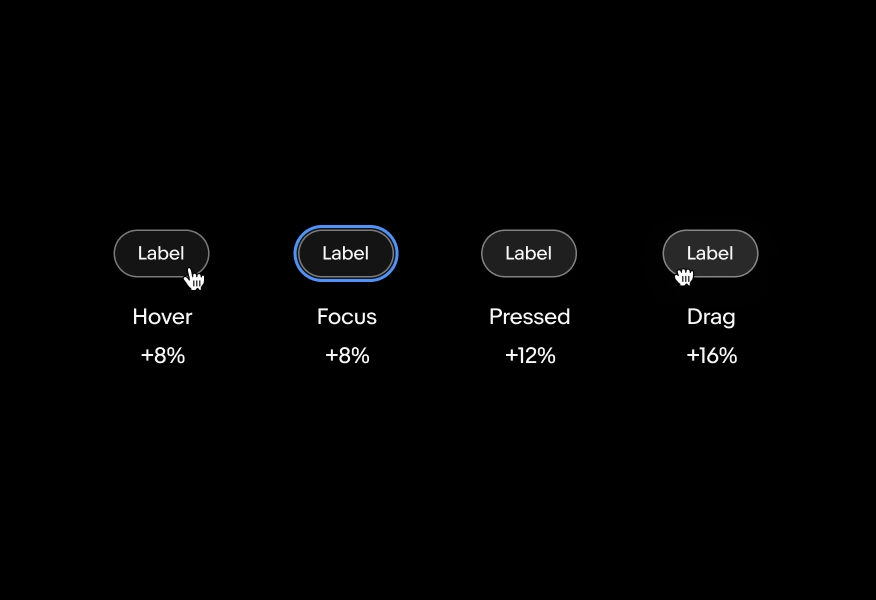
Graphics
Graphic elements use a heavier scrim to account for the variation in contrast and detail. Light and dark mode use black (#000).
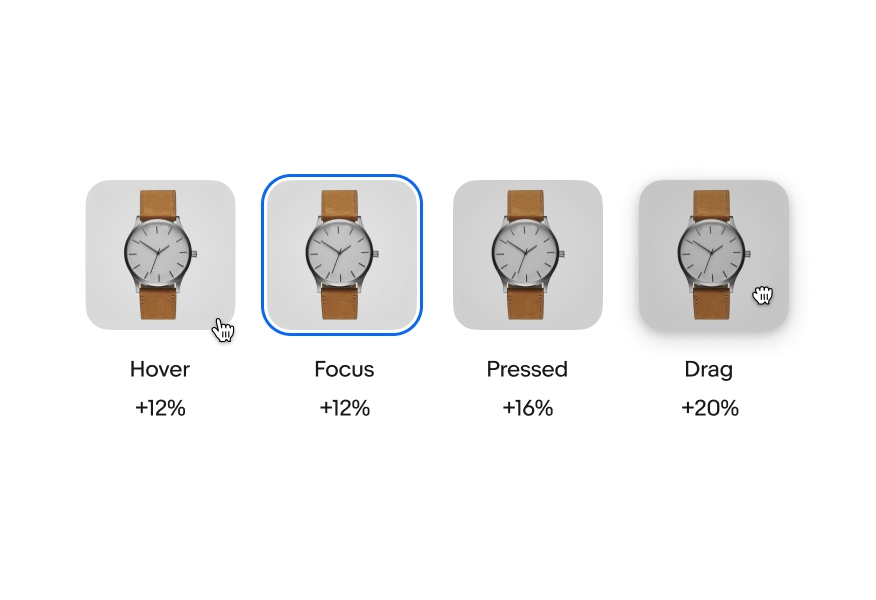
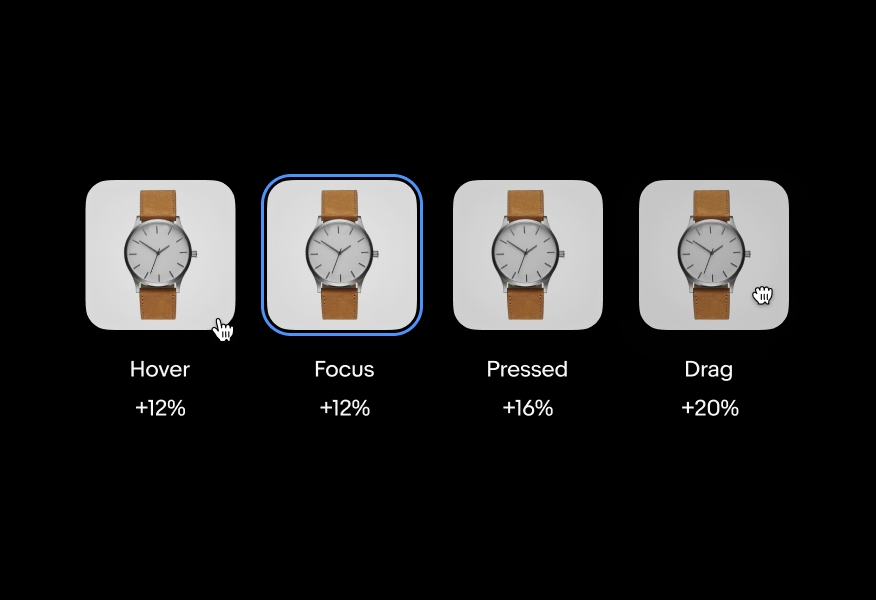
No container
Elements that do not have a container, like links or pagination, use opacity to indicate a change in state. Light and dark mode use 60% opacity for hover states. The focused state does not receive the opacity shift.
